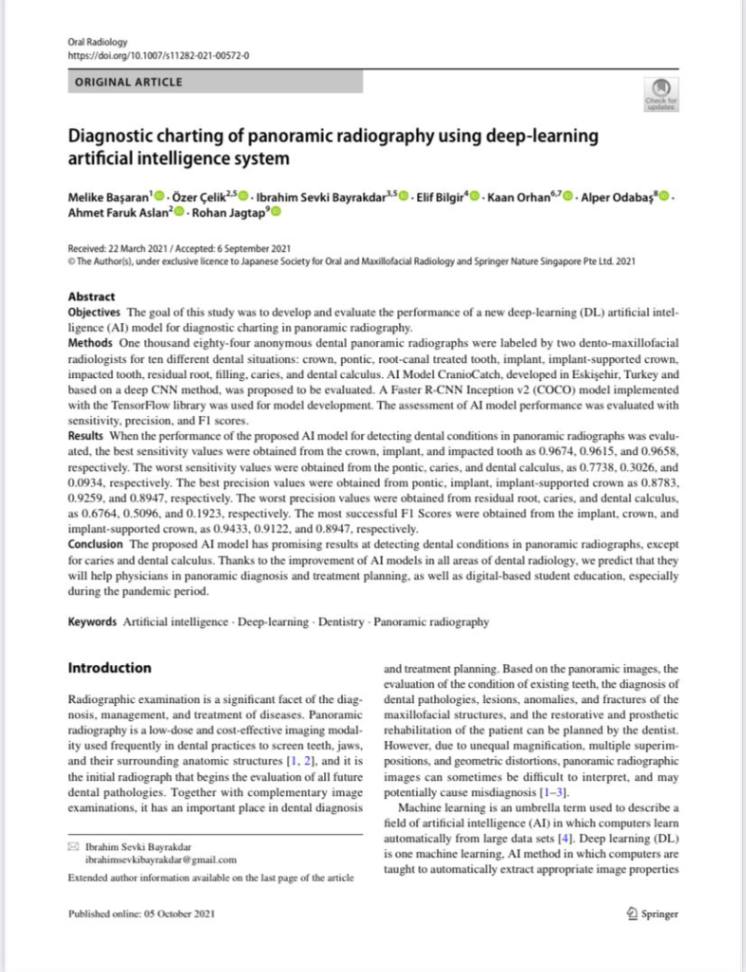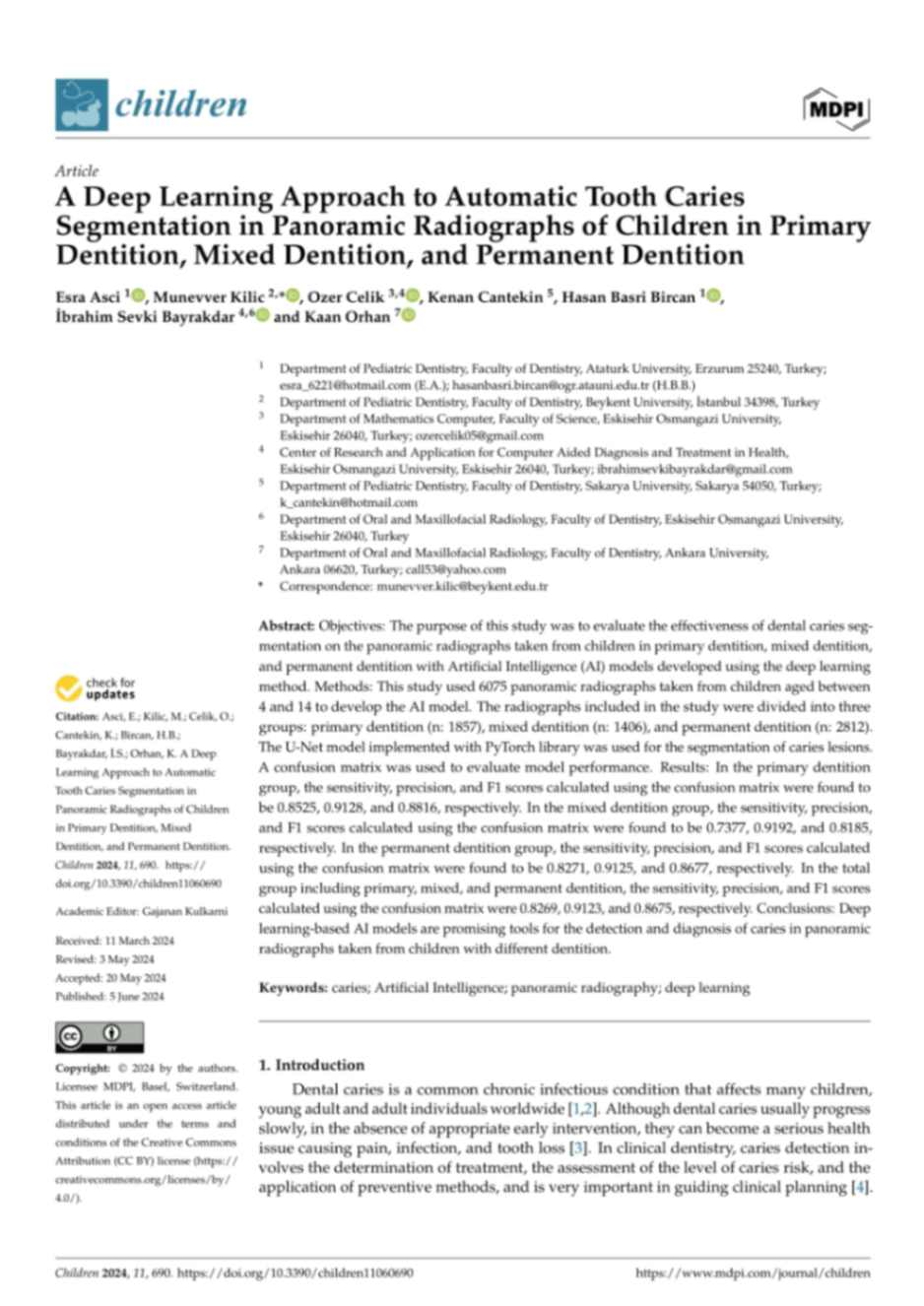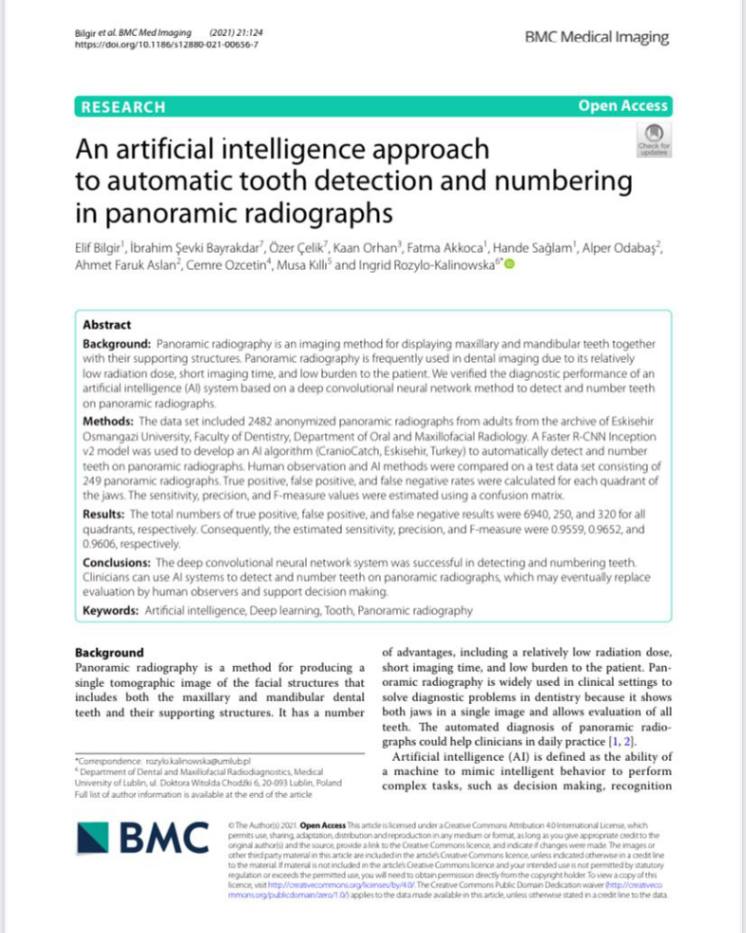Automatic Feature Segmentation in Dental Periapical Radiographs
Introduction
The study explores the application of Artificial Intelligence (AI), specifically Convolutional Neural Networks (CNNs), in diagnosing dental diseases using periapical radiographs. The objective is to enhance diagnostic accuracy and assist clinical processes by automating the feature segmentation in these radiographs.
Materials and Methods
- Patient Selection: A dataset of 1169 periapical radiographs from adults was obtained from Eskisehir Osmangazi University, Faculty of Dentistry. The images were captured between January 2016 and June 2020.
- Radiographic Dataset: Radiographs were taken using ProX periapical X-ray unit with specific parameters and processed with the ProScanner Phosphor Plate and Scanning System.
- Image Evaluation: Radiographs were labeled for different dental findings by an experienced research assistant and a dento-maxillofacial radiologist using CranioCatch annotation software.
- Deep Convolutional Neural Network: The study utilized the U-Net model implemented with the PyTorch library. U-Net’s architecture consists of an encoder and decoder that form a U-shaped structure, facilitating accurate image segmentation.
Model Pipeline and Training Phase
- The PyTorch library and Python were used for model development.
- The training was conducted using Dell PowerEdge servers. Images were resized to 512 × 512 and enhanced using techniques like intensity normalization and CLAHE.
- Data was split into 80% training, 10% testing, and 10% validation. The model's learning rate was set at 0.0001.
Statistical Analysis
- A confusion matrix was used to evaluate model performance, calculating metrics like sensitivity, precision, and F1 score.
- Metrics Calculation:
- True Positive (TP): Correctly detected and segmented dental diagnoses.
- False Positive (FP): Incorrectly detected but segmented dental diagnoses.
- False Negative (FN): Incorrectly detected and segmented dental diagnoses.
- Sensitivity: TP / (TP + FN)
- Precision: TP / (TP + FP)
- F1 Score: 2TP / (2TP + FP + FN)
- Intersection over Union (IoU): Used to assess model performance by comparing the predicted segmentation with the ground truth.
Results
- The AI model significantly improved the segmentation accuracy for various dental conditions, including carious lesions, crowns, dental pulp, dental fillings, periapical lesions, and root canal fillings.
- Performance metrics for different conditions were reported, indicating high sensitivity, precision, and F1 scores.
Conclusion
The study demonstrates the potential of AI, particularly CNN-based models, in enhancing the accuracy of dental diagnoses through automated segmentation of periapical radiographs. The results are promising for the integration of AI in routine clinical workflows, offering a robust clinical decision support system.
I Want to Write a Scientific Research Project
CranioCatch is a global leader in dental medical technology that improves oral care in the field of dentistry. With AI-supported clinical, educational, and labeling solutions, we provide significant improvements in the diagnosis and treatment of dental diseases using contemporary approaches in advanced machine learning technology.
CranioCatch serves thousands of patients with dental health issues worldwide every day with its innovative technologies. That’s why we eagerly look forward to meeting our valued dentists who wish to work in the field of 'Scientific Research in Dentistry'.



 Contact Us
Contact Us

